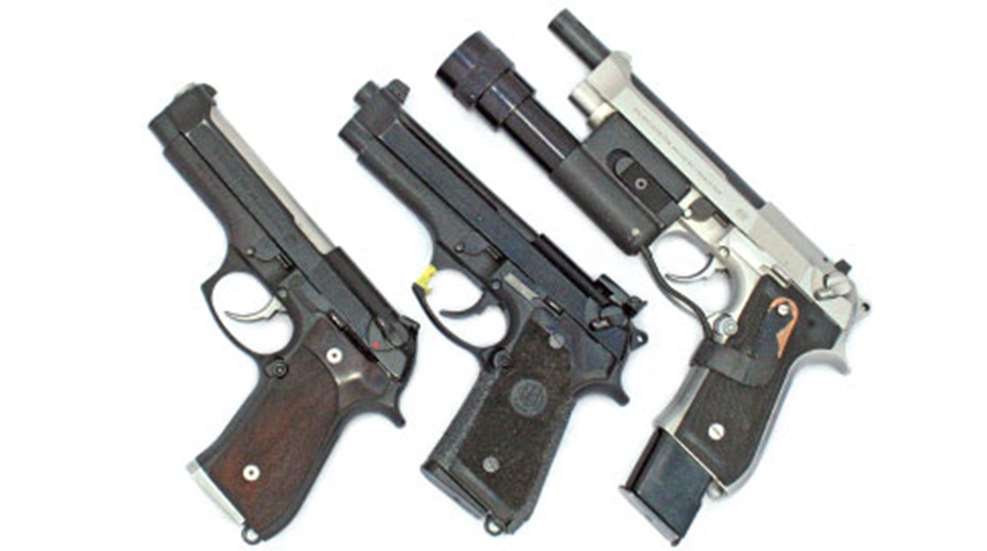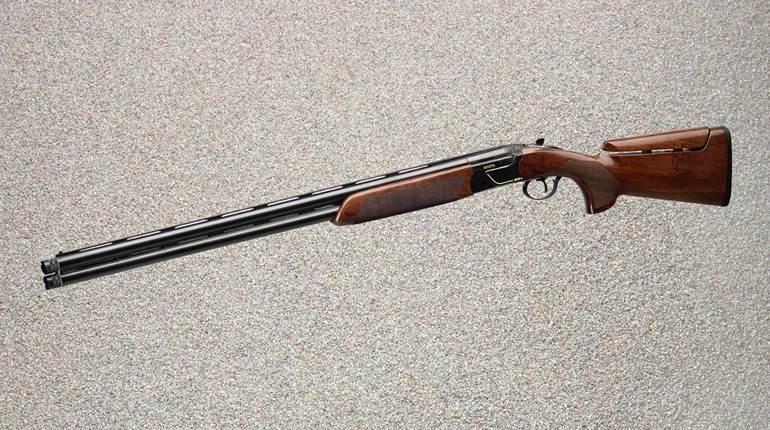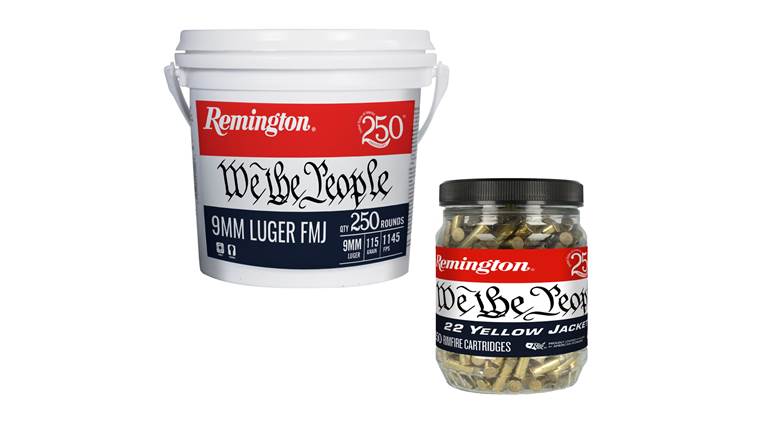
When American Rifleman published its feature on the “Top 10” handguns (September 2009, p. 60), the editors knew they’d raise the ire of many readers who would feel that their own pet sidearms had received short shrift. Those who have come to appreciate the Beretta 92FS, a.k.a. the U.S. military M9 service pistol, were among the first in line to express such sentiments.
The Beretta 92 traces its genesis to 1970, when Giusseppe Mazzetti and Vittorio Valle—reporting directly to CEO Carlo Beretta—led a design team of up to 15 engineers tasked with creating the ideal high-capacity, double-action 9 mm service pistol. The new gun incorporated Beretta’s own open-slide design of the Model 1934, a locking block system inspired by the Walther P.38 and, at first, a double-action mechanism with similarities to both the Walther and the contemporary Czech CZ-75. The first prototypes, with frame-mounted thumb safeties, were complete by 1975.
When the House Appropriations Committee gave the nod for a new U.S. military service handgun that would comply with NATO specs, the Beretta 92 was in the right place at the right time. Beretta unstintingly sent engineers back and forth across the Atlantic to ensure that the family gunmaker’s entry would absolutely conform with what the Joint Services Small Arms Project (JSSAP) mandated. The safety lever was moved to the slide to double as a de-cocker, an M1911-style magazine release button was placed in the “American position” behind the trigger guard, and an internal firing pin lock was incorporated. The original 92 morphed into what we now know as the 92F, which the U.S. military adopted as the M9.
That adoption in the mid-1980s created a firestorm of complaints from M1911 fans, .45-cal. fans and, especially, rival gun manufacturers and their congressional delegations. A commotion was raised, and ultimately a second exhaustive comparison test was undertaken, circa 1989. This one also resulted in the Beretta being selected and, ever since, it has been the primary standard U.S. military pistol.
All the other classics in American Rifleman’s original Top 10 had their detractors, then and now, and certainly the Beretta 92 is no exception. Its shortcomings have just been more thoroughly and publicly addressed and, usually, more decisively set aside. Did some guns exhibit separated slides? Yes, as few as 14 cases were documented, out of more than 3 million such pistols, and generally they were attributed to overly hot ammunition. There seems to have been none since the 92FS design change. Did some locking blocks crack? Yes, until a design change dramatically improved their durability.
Questions about the 92FS/M9’s shootability have gone by the wayside. Through the years at Camp Perry, Berettas accurized in the style of David Sams and the military marksmanship training units have surpassed the best accurized M1911s in the winners’ circles in Distinguished and President’s Hundred events. IDPA and IPSC national championships have been won with Beretta 92s “street-tuned” by such ’smiths as Ernest Langdon.
A batch of Check-Mate low-bid magazines with rough interiors caused Beretta jams in “the sandbox.” Check-Mate apologized and changed its design; the Marines bought Beretta magazines; and Beretta itself came out with a special “sand magazine.” These improvements seem to have fixed the problems, but the rumors continue. The facts contradict the rumors. Circa 1984, Beretta beat all comers in the military reliability contest, with a rate of one malfunction per 1,750 rounds. The most recent government test shows a malfunction rate of only one in every 20,500 rounds, Beretta executive Jeff Reh has proudly announced.
Yes, 9 mm NATO ball is not the best choice as a man-stopper, but this can’t be construed as a Beretta defect. Police officers in DeKalb County, Ga., laid waste to bad guys with the tremendously effective Federal 115-gr. +P+ hollow points out of their Beretta 92s … Los Angeles County and LAPD stopped worrying about the 9 mm stopping power of their Beretta 92s when they were issued high-tech Winchester Ranger hollow points … and FMJ-LP (low penetration) loads have improved the effectiveness of U.S. military units who’ve been issued this Federal 9 mm round, which is a modification of the company’s Expanding Full Metal Jacket design by Tom Burczynski.
Despite annual rumors of change, the U.S. military buys thousands—some years, tens of thousands—more M9 pistols, manufactured in Maryland by Beretta USA. Ironically, the Beretta 92’s vocal critics were the ones who forced the intensive testing that made the 92FS/M9 perhaps the most thoroughly evaluated—and thoroughly combat proven—fighting handgun of our time. “With enemies like these,” fans of the Beretta 92 might well ask, “who needs friends?”





































